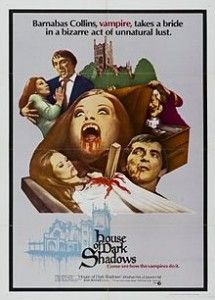A Stake Through the Heart of Rail
Katy Grimes: Apparently tired of all of the talk and stories around the capitol and throughout the state about the need to end the money-sucking High-Speed Rail system, Assemblywoman Diane Harkey, R-Dana Point, plans on driving a wooden stake through the heart of the High-Speed Rail plan herself, once and for all.
Almost like the diligent vampire hunter who kills the eery bloodsucker at the end of the scary movie, Harkey has authored Assembly Bill 1455, to halt state debt funding for the high-speed rail project.
Harkey says that so far, HSR has been in the works for three years and the cost keeps climbing. But there is nothing to show for the $800 million already spent – expect perhaps in the bank accounts of the many consultants tied to the High-Speed Rail Authority.
And at this moment, high speed rail is projected to cost California taxpayers more than $98 billion. Many say that is just the financial launching point for only one leg of the system from Bakersfield to Fresno, and costs can and will escalate.
Harkey said that a recent statewide Field Poll revealed that nearly two-thirds of the voters surveyed would like to re-vote on the issue. By nearly two to one, voters would reject the $9.95 billion bond to fund start-up costs for HSR. The reality is that even those that originally supported the concept know they were deceived; Californians do not support high-speed rail at any cost.
That sounds like affirmative approval from the state’s voters that the plan should be put down, permanently.
But it’s more about having sour grapes – or lemons – now, once we discovered all of the escalating costs for the rail system that won’t seem to die. Californians were totally duped into voting from Proposition 1A by some really crafty campaign people, and have we paid for it.
Harkey’s office provided information about the controversial process to even get the High Speed Rail ballot initiative onto the ballot. The courts ruled that the analysis of the bond measure, Proposition 1A, was misleading, written in promotional language.
Who allowed the language on the ballot? Attorney General Jerry Brown, who clearly provided a title loaded with positives:
Ballotpedia reported that the ballot title was:
Summary
The official summary provided to describe Proposition 1A said:
- Provides long-distance commuters with a safe, convenient, affordable, and reliable alternative to driving and high gas prices.
- Reduces traffic congestion on the state’s highways and at the state’s airports.
- Reduces California’s dependence on foreign oil.
- Reduces air pollution and global warming greenhouse gases.
- Establishes a clean, efficient 220 MPH transportation system.
- Improves existing passenger rail lines serving the state’s major population centers.
- Provides for California’s growing population.
- Provides for a bond issue of $9.95 billion to establish high-speed train service linking Southern California counties, the Sacramento/San Joaquin Valley, and the San Francisco Bay Area.
- Provides that at least 90% of these bond funds shall be spent for specific construction projects, with private and public matching funds required, including, but not limited to, federal funds, funds from revenue bonds, and local funds.
- Requires that use of all bond funds is subject to independent audits.
- Appropriates money from the General Fund to pay bond principal and interest.
It sounded as if the perfect rail system couldn’t fail.
In addition, the original price tag of $33 billion has now escalated to $98.5 – $117 billion for Phase I construction. That’s more than inflation at work on those numbers.
We are talking about BILLIONS to build, and then billions to operate every year.
Cha-ching. Only the cash register is empty.
“Phase II promised from Anaheim to San Diego is not even being discussed, and neither is the cost to operate whatever is actually built. The voters were assured there would be “no state operating subsidy” and that the riders would pay for the system. However, the analysis failed to mention hefty “construction costs” would be excluded, require financing, and repayment from the state’s General Fund (or tax-payer subsidy),” Harkey’s analysis showed.
Two More Blows Into The Heart
The CHSRA Peer Review Group is now advising the authority not to fund.
A December hearing in Washington, DC confirmed that Congress will not rescue California HSR plan if we are determined to become the Greece of the nation.
Constantly searching for strategies to improve our state’s dire financial situation that fall within the Legislature’s purview, Harkey wrote that she discovered:
Article XVI of the California Constitution authorizes the Legislature, at any time after the approval of a general obligation bond act by the people, to reduce the amount of the indebtedness authorized by the act to an amount not less than the amount contracted at the time of the reduction or to repeal the act if no debt has been contracted.
“To recap, the voters were deceived; the project lacks sufficient private, public or debt funding to complete even a requisite operating segment, as required under Proposition 1A; the Environmental Impact Report is incomplete; California is struggling with long term deficits and debt; the Governor claims to need more taxes; our existing infrastructure is in dire need of extension and repair; and voters are suffering from buyer’s remorse,” Harkey reported.
What’s unclear? It’s time to drive the final stake through the heart of the boondoggle High-Speed Rail plan. If not, it could bankrupt California.
If Gov. Jerry Brown is already talking about automatic trigger cuts which will go into effect and cut K-12 school spending by $4.8 billion, state university spending by $400 million, and the state’s courts by $125 million, if he doesn’t get his ballot tax increase passed, how dire is the state spending? Why Brown keeps talking about his support of HSR is a mystery, but one mystery we may seen resolved is during the campaign for his ballot tax increase plan when it becomes clear to voters that as long as the High-Speed Rail is in existence, tax opponents will point to it as the Poster Boondoggle for government waste.
It is. In fact, it’s a gross example for boondoggle government waste, and will undoubtedly now cast a pallor on even some of the more clever government waste plans. We can hope.
JAN. 10, 2012
Related Articles
Jerry's Real Plan: $25 billion in Cuts?
John Seiler: Looking over Katy Grimes’ budget piece today on Jerry Brown’s testimony before the Legislature, “Is An All-Cuts Budget
Will Gov. Brown kill self-driving cars as threat to bullet train?
Sept. 13 By Chris Reed Gov. Jerry Brown gave another hallucinatory endorsement to the bullet-train project in a weekend interview
Miami Mayor Recalled for Tax Hikes
John Seiler: California legislators eager to put a tax increase on a special election ballot in June, as demanded by




